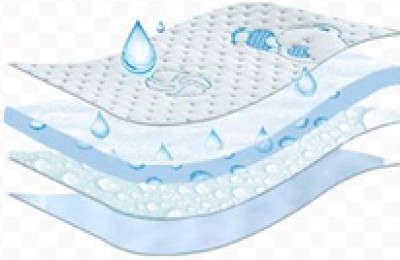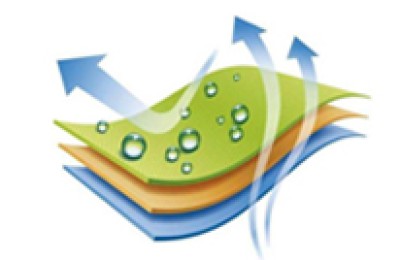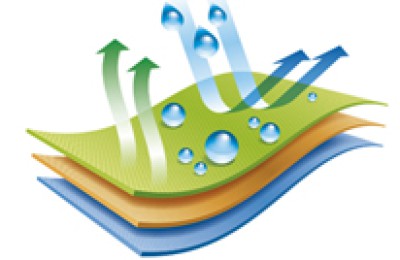According to customs statistics, my country’s exports of textiles and clothing (including clothing and clothing accessories, textile yarns, fabrics and products) from January to October 2009 were US$136.24 billion, a decrease of 11.6% compared with the same period in 2008 (the same below). Among them, exports of clothing and clothing accessories were US$87.9 billion, down 10.9%; exports of textile yarns, fabrics and products were US$48.34 billion, down 12.9%. Its main export features are as follows:
1. Exports fell back in October. Since my country’s textile and apparel exports fell to the year’s minimum of US$6.67 billion in February 2009, the export scale began to gradually rebound, and by September exports reached the year’s maximum of US$16.75 billion. Affected by the National Day holiday, exports fell back in October. Exports that month were US$14.64 billion, a year-on-year decrease of 13% and a month-on-month decrease of 12.6% (chart below).

2. General trade exports accounted for more than 70%, and processing trade exports declined significantly. From January to October 2009, my country exported US$98.18 billion of textiles and clothing through general trade, down 7.9%, accounting for 72.1% of my country’s total textile and clothing exports during the same period; during the same period, China’s processing trade exports were US$28.71 billion, down 16.2%. Accounting for 21.1%.
3. The exports of private enterprises are mainly exports, and the exports of all types of enterprises have declined to varying degrees. From January to October 2009, my country’s private enterprises exported US$60.43 billion in textiles and clothing, a decrease of 6.6%, accounting for 44.4% of my country’s total textile and clothing exports during the same period; during the same period, foreign-invested enterprises exported US$45.02 billion, a decrease of 11%, accounting for 33. %; the exports of state-owned enterprises were US$23.79 billion, down 20.6%, accounting for 17.5%; the exports of collective enterprises were US$6.72 billion, down 20.9%.
4. Exports to the EU dropped significantly, while exports to the United States and Japan increased slightly. From January to October 2009, my country’s textile and apparel exports to the EU were US$29.79 billion, a decrease of 8.5%; exports to the United States were US$21.96 billion, an increase of 1.4%; exports to Japan were US$17.68 billion, an increase of 1%. The total of the above three Accounting for 51% of my country’s total textile and apparel exports during the same period. In addition, mainland exports to Hong Kong were US$11.31 billion, a decrease of 16.3%.
5. Zhejiang, Guangdong and Jiangsu rank among the top three exporters. From January to October 2009, Zhejiang, Guangdong, and Jiangsu exported textiles and clothing of US$32.91 billion, US$25.11 billion, and US$22.23 billion respectively, down 8%, 9.8%, and 10.1% respectively. The above three combined accounted for my country’s textile and apparel exports during the same period. 58.9% of total apparel exports. During the same period, Shanghai’s exports were US$12.72 billion, down 9%; Shandong’s exports were US$11.63 billion, down 10.8%.
Although my country’s textile and apparel exports are currently better than overall exports, it still faces the following three problems:
First, international market demand has not improved significantly. At the just-concluded 106th Canton Fair, the turnover of textile and clothing rebounded slightly, with a turnover of US$3.42 billion, an increase of 5.9%, accounting for 11.2% of the total turnover of the exhibition; of which the turnover of clothing was US$1.79 billion, an increase of 10.5%, and the textile yarn Online transaction volume was US$1.63 billion, an increase of 1.4%. Judging from the transaction data of this Canton Fair, international orders for textile and clothing have increased slightly. However, according to company feedback, the current orders are mainly short orders, small orders, and low-end orders. International buyers still account for a large proportion of inventory replenishment. Merchants are interested in The economic outlook remains cautious, and international demand for textiles and apparel has not yet seen a significant improvement.
Second, countries are adopting more and more trade protection measures. In order to promote the development of related industries in their own countries, various countries have introduced a variety of trade protection measures. In September 2009, the European Commission launched an anti-dumping investigation into polyester high-strength yarn originating from China and other countries and regions. In the past, products subject to anti-dumping investigations were mainly concentrated in mid- to low-end textiles. In addition, the “domino” effect of the U.S. tire “special guarantee case” has further spread. The United States Textile Industry and Workers Federation is planning to file a special guarantee investigation application for Chinese textiles exported to the United States. In 2009, under the WTO trade remedy framework, there were more than 30 investigations and preliminary rulings on China’s exports of textile products in foreign markets. my country’s textile and apparel export industry needs to be wary of falling into the quagmire of increasingly severe trade protection.
Third, the profit margins of textile companies have been further compressed. Currently, my country’s cotton market is facing its biggest dilemma since 2003: due to both reductions in cotton production and area, huge supply pressure has led to rising cotton prices. From September to November 2009, the price of cotton rose from 11,000 yuan per ton to 14,000 yuan per ton, and the high-quality cotton in cotton, long-staple cotton, rose from 16,000 yuan per ton to 20,000 yuan per ton. The price of state-owned cotton, which aims to ease market supply constraints, has also risen from 13,200 yuan/ton at the beginning of the sell-off to about 15,000 yuan/ton. The continued rise in cotton procurement costs and the weakness in downstream yarn prices have compressed the profit margins of textile companies.
Suggestions (omitted).
my country’s textile and apparel exports have declined
According to customs statistics, my country’s exports of textiles and clothing (including clothing and clothing accessories, textile yarns, fabrics and products) from January to October 2009 were US$136.2…
This article is from the Internet, does not represent Composite Fabric,bonded Fabric,Lamination Fabric position, reproduced please specify the source.https://www.yjtextile.com/archives/26801





